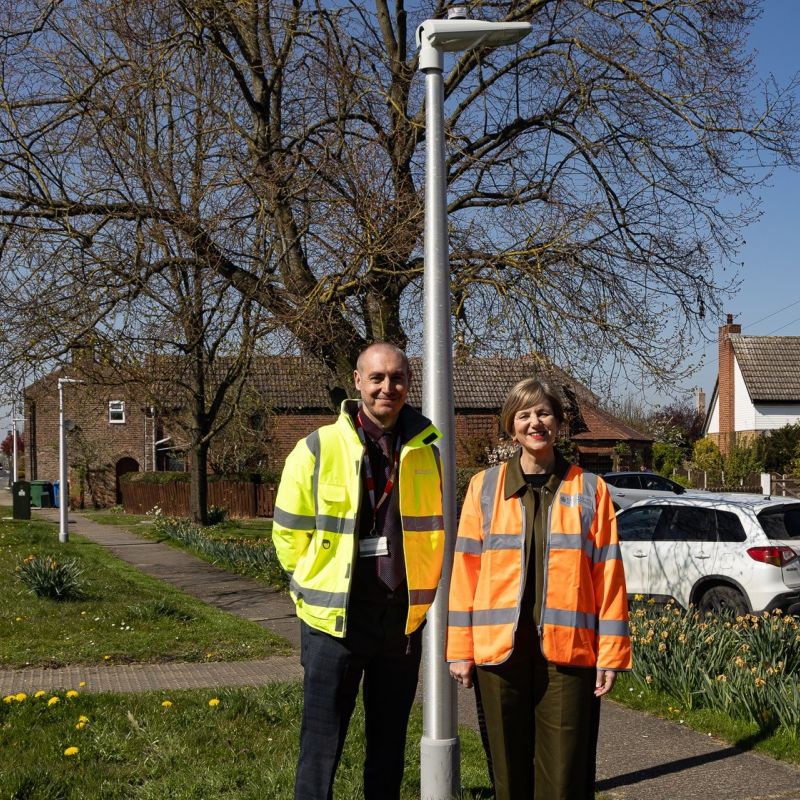An East Riding project aimed at cutting carbon and saving energy in street lights on major roads has been praised in a visit by a transport minister.
Lillian Greenwood MP, Parliamentary Under-Secretary of State and Minister for the Future of Roads at the Department for Transport, visited the village of Hayton, near Pocklington, for a guided tour of one of the sites of East Riding of Yorkshire Council’s innovative street lights trial.
The council was awarded £3.3m to study more environmentally friendly ways of lighting main roads in the future, as more efficient car headlights will make some existing road lighting redundant.
The project is part of ADEPT Live Labs 2: Decarbonising Local Roads in the UK, a three-year, UK-wide £30 million programme funded by the Department for Transport that aims to make the local highway network much greener.
The minister visited the test site to see for herself how the scheme will work, and was given a presentation by council officers and local councillors involved in the trial.
She was shown new pedestrian-only lights which have been newly installed in the village of Hayton for local residents to replace the nearby lights along the main road. They will be switched on later this month.
Earlier this month, street lights were switched off along two stretches of main road - the A164 from the Humber Bridge to Willerby and from Cottingham to Skidby, and the A1079 from Dunswell Roundabout to Ennerdale Bridge, some of which has been replaced by modern pedestrian-only lighting.
The council is using AI and thermal imaging camera technology in a world first to monitor the behaviour of drivers, cyclists and pedestrians during the trial.
The East Riding is leading a group of nine other authorities in England, Wales, Scotland and Northern Ireland on the Live Labs 2 street lighting project. Each authority is carrying out its own studies to feed into the scheme, all with the aim of setting a new British Standard in road lighting, which has remained the same for years.
If the trial is proved successful, it could lead to more than a million street lights being switched off in out-of-town areas across the country, saving tonnes of carbon and millions of pounds of public money.
Karl Rourke, the council’s service manager for street lighting, who is leading the project, said: “We’re extremely pleased to have received a visit from the transport minister and be able to highlight our ground-breaking project and show what we aim to achieve.”
In the past year, the council has installed more than 80km of new highly reflective white lines, more than 5,000 solar powered illuminated road studs and more than 140 square metres of new, highly reflective signs on the A1079 and A164.
All are designed to give drivers all the visual indications they need to navigate the road without the need for traditional overhead lighting.



